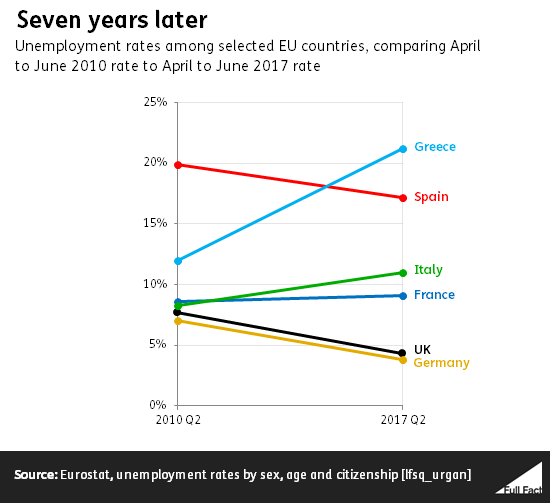This is correct on both counts. The number of people in employment is at a near record level at 32 million, as is the employment rate at 75%. We’ve looked more into what kinds of jobs those are before.
The UK unemployment rate in April to June this year—the latest period we have comparable EU figures for—was 4.3%. That’s just under half of the Eurozone average of 9%. These figures cover people aged between 15 and 74.
The unemployment rate is the number of unemployed people as a percentage of all ‘economically active’ people. ‘Economically active’ means people who are either in work or who want to be. So it doesn’t count people who aren’t in work, but aren’t actively seeking it either, like retirees.
The Eurozone is made up of EU countries which use the Euro. It includes Austria, Belgium, Cyprus, Estonia, Finland, France, Germany, Greece, Ireland, Italy, Latvia, Lithuania, Luxembourg, Malta, Netherlands, Portugal, Slovakia, Slovenia and Spain.
The UK has been doing much better in recent years compared to the Eurozone average than it has done for decades. The UK has always had a lower unemployment rate, coming closest in autumn 2011 when the UK rate hit 8.5%, with the Eurozone at 9.8%. Latvia and Lithuania weren’t part of the Eurozone back then.
Some countries with the Euro still have slightly lower rates. Germany, for example, has had a consistently lower rate than the UK since the 2009 recession.

